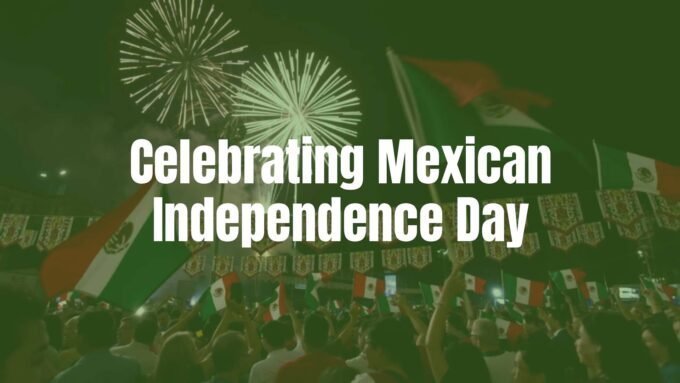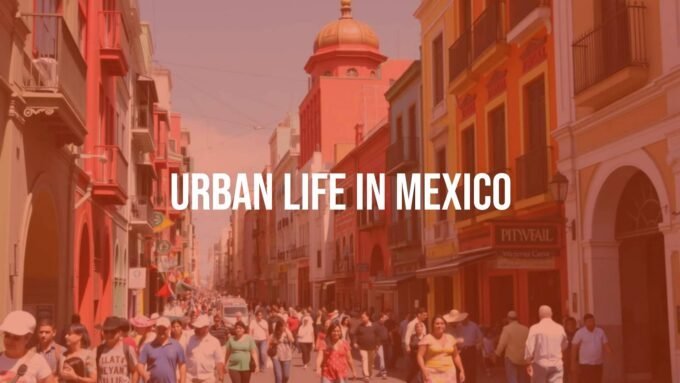Thinking about visiting Mexico? Great decision! This colorful country in southern North America is a wonderful place to experience new sights, flavors, and history. From ancient ruins and high pyramids to beautiful beaches and lively cities, Mexico has something special for every traveler. Whether you love relaxing by the sea, exploring local culture, learning about history, or tasting new food, you’ll find the right place and time to discover what makes Mexico unique.

Quick facts about Mexico
Mexico, officially called the United Mexican States, is a large and varied nation. It’s the 13th largest country in the world and has over 9,000 kilometers of coastline. You’ll see deserts, jungles, mountain ranges, and coral reefs as you travel. Mexico’s past is filled with stories from ancient civilizations to the colonial period and revolution-traces of this history are seen today in buildings, traditions, and the lively spirit of its people.
Where is Mexico?
Mexico sits at the southern end of North America. It borders the United States to the north and Guatemala and Belize to the southeast. On the west is the Pacific Ocean, while the east has the Gulf of Mexico and the Caribbean Sea. Because of this location, Mexico has many types of coastlines and landscapes, including peaceful beaches, rocky cliffs, and scenic bays.
Inland, the scenery changes a lot. There are big deserts, thick rainforests, and mountain ranges like the Sierra Madre Occidental and Sierra Madre Oriental. The Mexican Plateau in the center is a raised flat area full of valleys and some of the country’s largest cities, including Mexico City. Farther south, the Yucatán Peninsula is flat, wooded, and famous for its clear-water cenotes (natural sinkholes).
Mexico facts table
| Area | 1,964,375 sq km (758,449 sq miles) – about 3 times Texas |
| Population | Approx. 127.5 million (2022), 62 per sq km |
| Capital | Mexico City (Ciudad de México) |
| Government | Federal Republic, President Claudia Sheinbaum (as of 2024) |
| Currency | Mexican Peso (MXN), around 20 MXN per USD |
| Language | Spanish (official), plus many indigenous languages |
| Time Zones | 4 time zones (0-3 hours behind Washington, D.C.) |
| Electrical Plugs | Type A/B, 120V/60Hz |
When to visit Mexico
You can visit Mexico any time of year thanks to its different climates and regions. The best time for you depends on the type of trip you want. Every season has its own special events and weather.
Typical weather year-round
Between November and April is Mexico’s dry season. The weather is cooler and pleasant, good for exploring cities like Mexico City and Guadalajara or visiting beaches in Cancún, Tulum, and Puerto Vallarta. This is also high season for tourists, which means higher prices and more crowds around holidays.
From May to October is the rainy season. Rain usually comes in short bursts in the afternoon, but mornings and evenings are often clear. This is a good time for fewer crowds and lower prices, but expect warmer, humid weather along the coasts and possible hurricanes from June to November, especially near the Caribbean and Pacific.
Autumn, especially September and October, is quieter and features fun festivals, such as Día de los Muertos (Day of the Dead).
Popular festivals
- Día de los Muertos (November 1-2): Cities fill with color and celebrations honoring the dead.
- Semana Santa (Holy Week): Around Easter, with big parades and religious events everywhere.
- Independence Day (September 16): Nationwide parties, fireworks, and parades.
- Regional music festivals: Think mariachi in Guadalajara, or jazz by the beach.

Almost anywhere you go, you’ll find a local celebration or market happening.
Entry requirements
Preparing for your visit to Mexico is straightforward, but there are a few key things to know before you go.
Do you need a visa?
- Most visitors, including Americans and Britons, don’t need a visa for tourism visits up to 180 days.
- If you want to stay longer or plan to work or volunteer, you need the right visa or permit from the Mexican Embassy where you live.
- If traveling via the USA, check U.S. entry requirements like ESTA.
Passport and border checks
- Your passport must be valid for your entire stay. Most embassies recommend at least 180 days of validity.
- You need at least one blank passport page for entry stamps.
- At airports, immigration stamps your passport (sometimes you also get a receipt with a QR code-don’t lose it, you’ll need it when you leave).
- By land, all travelers-even those staying close to the border-must get an FMM entry permit. Make sure your passport is stamped when crossing.
- Border officials may ask for proof of return travel, your accommodation, and enough money to support yourself. If you’re staying with friends or family, you may need a letter of invitation from your host with contact details.
Vaccines and health
- No special shots are required, but check with your doctor at least a month before traveling to make sure routine vaccines are up to date-especially if you have health issues or are pregnant.
- Watch for illnesses like Zika, chikungunya, and dengue in some regions.
- If you visit high-altitude cities like Mexico City, you may feel some altitude sickness at first.
- Don’t drink tap water in Mexico; always use bottled or filtered water, and skip ice cubes unless you know they’re made safely.
- For food, be careful with uncooked produce and street food. A travel insurance plan that covers health emergencies is a good idea since hospitals may require payment upfront.
Customs tips
- Declare goods worth over $300 USD (by land) or $500 USD (by air). You’ll need to fill out an online form if you’re bringing valuable items.
- You can only bring in one portable computer (laptop/tablet) per person without paying extra tax.
- Drugs (even marijuana and medical marijuana), e-cigarettes, and vapes are illegal to bring in. Don’t try it-you’ll face fines or criminal charges.
- Weapons of any kind without a special Mexican permit are strictly against the law.
- A criminal record can prevent you from entering Mexico.
Travel prep and packing
Getting ready for Mexico is simple, but a few smart packing tips can make your trip even better.
Packing for Mexico
- Beach trips: Bring light clothes, swimwear, sun hat, reef-safe sunscreen, and a waterproof bag for electronics.
- Hot/humid areas (like Mérida): Lightweight, airy clothing is best.
- Higher altitudes (like Mexico City): Pack a jacket or hoodie for cool evenings.
- Other useful items: Quick-dry towel, filtered water bottle (tap water isn’t safe), and a small first-aid kit, including medicine for stomach issues (“Montezuma’s revenge”).
Travel insurance
- Get travel insurance that covers medical emergencies, evacuation, and unexpected events like canceled flights or lost luggage.
- Most Mexican hospitals don’t accept U.S. health cards, and you may need to pay upfront for treatment.
- Check that your policy covers risky activities like hiking or diving if you plan to try them.
Internet and phone
- Free Wi-Fi is common in hotels and cafes in cities and tourist spots.
- For travel in remote areas or if you need reliable internet, consider buying an eSIM from companies like Saily or Holafly (these work right away on your phone).
- This lets you access maps and stay connected almost everywhere.
How much does it cost to visit Mexico?
Mexico offers good value for travelers. Costs can vary a lot by location and travel style, but you can enjoy the country on any budget.
Hotels and places to stay
| Type | Estimated Price per Night (MXN) |
|---|---|
| Hostel dorm bed | 250-300 |
| Private hostel room | 600-1,900 |
| Budget hotel | 700+ |
| Airbnb room | 300-1,200 |
| Entire Airbnb apartment/house | 600-1,800 |
| Campsite | ~200 |
Food prices
- Street food: 10-75 MXN per serving (tacos, snacks, etc.)
- Local restaurant meal: 150-300 MXN
- Fast food (McDonald’s): ~120 MXN
- Beer: ~20 MXN
- Cocktail: ~80 MXN
- Mezcal shot: 100-250 MXN
- Coffee: ~50 MXN
- Bottled water: ~15 MXN
- Groceries for a week: ~750 MXN (shopping local)
Sample daily budgets
- Budget traveler (~800 MXN/day): Dorm bed, street or home-cooked food, public transport, some attractions. Add 100 MXN if eating out more often or buying drinks.
- Mid-range (~1,800 MXN/day): Private room, most meals out, more sightseeing, occasional taxis/drinks.
- Luxury (~3,600 MXN/day): Stay in nice hotels, eat out every meal, use taxis/rent a car, enjoy tours and extra activities.
Money-saving advice
- Use a water bottle with a filter to save on bottled water.
- Shop for food at local markets.
- Eat street food for tasty, cheap meals.
- Join free walking tours (tip your guide).
- Travel during low season (late April-early December) for better prices.
- Visit less touristy inland regions for lower costs.
- Try Couchsurfing to stay with locals for free.
- Look for set lunch specials (“comida corrida”) between 2-4 pm for good deals.
- Buy alcohol at stores, not bars or clubs.
- Use buses or ride-shares instead of taxis, and confirm fares before getting in.
Where to go in Mexico
Mexico is huge, with many different places to explore. Here are some top highlights depending on what you’re looking for:
Popular destinations
- Mexico City: The country’s busy, colorful capital. Packed with museums, markets, and amazing restaurants.
- Cancún, Playa del Carmen, Tulum: Caribbean beaches with white sand and turquoise water. Lots of nightlife and great places to swim and relax. Tulum features famous Mayan ruins on a cliff.
- Puerto Vallarta, Los Cabos: Pacific coast resorts with excellent beaches and luxury hotels.
- Sayulita: A small surf town known for its friendly atmosphere and yoga retreats.
- Oaxaca: Famous for food, mezcal, colorful buildings, and crafts.
- Guadalajara: Birthplace of tequila and mariachi. Lots of museums and culture.

Main regions explained
Baja California & Pacific Coast
- Arid and desert-like scenery with top diving in Los Cabos.
- Surfing, beaches, and mountain-meets-sea views in Puerto Vallarta and Sayulita.
Yucatán Peninsula & Caribbean
- Flat jungle, cenotes, and Mayan ruins like Chichén Itzá and Tulum.
- The Caribbean coast-Cancún, Playa del Carmen, Tulum-is famous for stunning beaches and reefs.
- Quieter escapes: Isla Holbox, Mérida, Cozumel, and El Cuyo.
- The new Tren Maya train helps you reach more places across the peninsula.
Mexico City & Central Mexico
- Mexico City for museums, food, and city life.
- Teotihuacan for ancient pyramids.
- Colorful, historic towns like San Miguel de Allende, Guanajuato, and Querétaro.
Where to sleep in Mexico
Mexico’s places to stay range from affordable hostels to fancy resorts. There’s something for every taste and budget.
Types of accommodation
- Hotels: Great for comfort and convenience. Many options are available everywhere, from basic to luxury.
- Hostels: Cheap and social, perfect for solo travelers or those on a tight budget. Private rooms are also available in many places.
- Vacation rentals (Airbnb): Best for groups, families, or if you want a home-like experience and a kitchen.
Good areas to stay
- Mexico City: Try Condesa, Polanco, or Roma Norte for safety, food, and things to do.
- Yucatán (Tulum/Playa del Carmen/Cancún): Tulum for luxury (expensive), Playa for cheaper options, Cancún’s downtown for more local flavor.
- Oaxaca: Stay near the city center to enjoy culture and food.
- Puerto Vallarta: Romantic Zone for nightlife; quieter resorts up the coast.
- San Miguel de Allende: Unique boutique hotels with an artistic vibe.
- Guanajuato: Stay in historic hotels for views and city charm.
- Valladolid: Affordable, boutique hotels close to cenotes and Mayan ruins.
How to get around Mexico
Traveling in Mexico is easy and depends on your style and schedule. Here are your main options:
Public transportation
- Buses (camiones): Cheapest way to move around cities; 5 MXN per ride.
- Metro (Mexico City, Guadalajara): Great value and wide coverage. Buy a rechargeable Metro Card for multiple trips.
- Long-distance buses: Companies like ADO, Primera Plus, and ETN connect most towns and major tourist spots comfortably.
- Tren Maya: The new Mayan Train links Yucatán’s key attractions.
| Route | Duration | Approx. Price (MXN) |
|---|---|---|
| Cancún-Mexico City (bus) | 27 hours | 1,800 |
| Puebla-Mexico City (bus) | 2 hours | 200 |
Flights within Mexico
- Good for saving time on long routes (e.g., Cancún to Mexico City is just 2 hours by plane, starting at about 470 MXN).
- Aeroméxico, Interjet, VivaAerobus, and Volaris are main airlines.
- Compare prices on sites like Skyscanner for deals.
Car rental, taxis, and ride-shares
- Renting a car is handy for road trips. Starts at around $15 USD per day. Be careful to drive during daylight and stay on toll roads for safety.
- Taxis are everywhere. For safety, use taxis ordered by phone/app or from taxi stands. Don’t flag them on the street in big cities.
- Apps like Uber and Cabify are safe and common in many places, but confirm car and driver details before you get in.
- Taxi prices vary; ask for the price before you ride and negotiate if possible.
Things to do in Mexico
There’s a wide range of activities in Mexico for every traveler’s interests.
Historic sites and ruins
- Chichén Itzá: One of the world’s best-known Mayan sites (entry ~571 MXN).
- Teotihuacan: See giant pyramids near Mexico City.
- Tulum Ruins: Ancient ruins with sea views.
- Palenque, Calakmul, Ek Balam, Uxmal: Other standout archaeological sites.
Adventure and nature
- Hike up volcanoes like Pico de Orizaba (tours start at ~1,730 MXN).
- Try canyoning, hang-gliding, rafting, or caving.
- Scuba dive or snorkel the Maya Reef or places like Cozumel and Isla Mujeres (2-tank dive from ~2,800 MXN).
- Swim in cenotes in Yucatán (tours from ~1,350 MXN).
- See whales in Baja California, swim with whale sharks, or explore jungles full of wildlife.

Beaches and resorts
Relax or party in world-famous beach spots like Cancún, Tulum, Playa del Carmen, Puerto Vallarta, Los Cabos, or smaller places like Isla Holbox and El Cuyo for a quiet experience.
Culture and food
- Stroll through lively markets for crafts and food (Mexico City’s Mercado Ciudadela, Oaxaca’s Mercado Benito Juárez).
- Taste famous dishes: tacos, tlayudas, cochinita pibil, mezcal, tequila.
- Watch Lucha Libre wrestling in Mexico City for fun entertainment.
- Experience Day of the Dead or visit the unusual Island of Dolls near Mexico City.
Health and safety tips
Mexico is a rewarding destination, but knowing how to stay healthy and safe makes your trip smoother.
Safety overview
- Main tourist places are generally safe, but safety can change by region. Mexico’s crime rates are similar to, or even lower than, some big U.S. cities, especially in touristy zones.
- Most crime is between local groups-tourists are rarely involved unless they seek trouble (drugs, illegal activities).
- Petty theft is more common: watch your bags, don’t show valuables, and avoid empty streets at night.
Higher-risk areas
- Some states have serious travel warnings: Colima, Guerrero, Michoacán, Sinaloa, Tamaulipas, Zacatecas (Level 4, “Do Not Travel”).
- Others are under “Reconsider travel” alerts-check the latest government advice before going.
- Even in Level 2 or 3 states, use caution in unfamiliar neighborhoods and after dark.
- Sign up for travel alerts from your embassy if possible.
Common scams
- Always ask prices in advance, especially for taxis and souvenirs. Beware salespeople who are too insistent.
- Use ATMs inside banks, check for tampering, and don’t take out large sums.
- If you get odd calls or messages saying a relative is in trouble and needs money, try to contact them directly to check-it’s often a scam.
- Call 911 for emergency help; for U.S. citizens, the embassy number is 55-5080-2000 (add country code from abroad).
Medical emergencies
- Dial 911 for ambulance, fire, or police. Having a Spanish speaker help can be useful.
- Big cities have well-equipped hospitals, but smaller towns may not.
- Most hospitals require payment before treatment-travel insurance helps.
- If medical evacuation is needed, special insurance is very helpful since local hospitals seldom accept U.S. health insurance.
- If considering elective or cosmetic medical procedures, research the doctor and facility to avoid problems.
Local customs and laws
What travelers should know
- Follow local laws, or you risk fines, deportation, or arrest-sometimes U.S. citizens can be prosecuted at home, too.
- Firearms and other weapons (including knives, fireworks, etc.) are forbidden without special Mexican permits. U.S. permits don’t count.
- Drugs, including medical marijuana, are illegal, and vaping devices are not allowed either.
- Foreigners shouldn’t join marches, protests, or political events-participating could get you deported or detained.
- Beware of local “fast” fines on the road, especially at night.
Cultural basics
- Mexicans are friendly, polite, and enjoy time with family. Greetings (“Buenos días/tardes/noches”) are important when you enter a shop or restaurant.
- Expect people to stand closer during conversations than in some other countries.
- Tipping is normal-about 15% in restaurants, for taxi drivers, and for other service workers.
- You can often negotiate prices in markets.
- Dress modestly, especially in rural or religious places. Public affection is accepted in big cities but may cause attention in smaller towns.
Advice for LGBTQ+ and minority visitors
- LGBTQ+ rights have improved-same-sex marriage is legal in many states and big cities (Mexico City, Puerto Vallarta, Cancún) are very accepting.
- Some smaller or rural areas are more traditional. Avoid public displays of affection if unsure-check local customs before you go.
- For all minority travelers, keep normal safety habits and know that most of Mexico is welcoming. If you need help, local authorities and your embassy can assist.
Frequently asked questions
Can I drink the tap water?
No. It’s safest to drink bottled or filtered water everywhere in Mexico. Avoid ice unless you know it’s safe, and consider using a water bottle with a filter for clean drinking water anywhere.
How do I get cash and use ATMs safely?
Use pesos for the best rates. ATMs are common in cities and tourist places; use them during the day and inside banks or busy stores for more safety. Watch for skimming devices, don’t take out too much cash at once, and let your bank know about your travel plans to avoid card issues.
What languages are spoken?
Spanish is the main language, but many locals in tourist spots speak English. Knowing some Spanish basics helps a lot and is appreciated. Some regions also have communities speaking indigenous languages.














Leave a comment